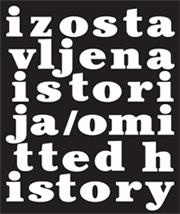Aleksandra Sekulić (ed.): Media Archaeology: The Nineties (2009)
Filed under book | Tags: · 1990s, mass media, media archeology, memory, serbia, television, war, yugoslavia

Media Archaeology is a long term research and program project, initiated in Archive of alternative film and video in “Students’ City” Cultural Center in Belgrade, programs initially hosted by Academic Film Center in 2006. Dealing with media forms as symptoms of social phenomena the team of the project presented this research through a dynamic program model of screening and discussion between two hosts with participation of the audience, which turned out to be a right model to establish a communication with the generation who hadn’t have a chance to experience the appearance and transformation of particular media phenomena.
In 2007, the series of lectures which embraced particular media forms from the history of media production of Socialist Federal Republic of Yugoslavia, with a special program dedicated to the translation of Western pop culture in Asia, the program concept enabling communication with the younger audience, with creating an insight into their perception of contemporary media forms was established, and also opened a call for collecting material for a media archive.
In 2008, with the support of the ministry of culture and media of the Republic of Serbia, a project Media Archaeology: The Nineties was initiated, and focused on analysis of the models used for media coverage and shaping of the disastrous social crisis of the 1990’s and to remind of the depth and the long term influences of the changes still visible in media production.
Project team: Boško Prostran, Jovan Bačkulja, Stevan Vuković, Aleksandra Sekulić, Ivica Đorđević, Nebojša Petrović
Translation: Vesna Jovanović, Aleksandra Sekulić, Greg de Cuir
Publisher: Center for cultural decontamination; with Archive of alternative film and video, “Students’ City” Cultural Center, Belgrade, September 2009
35 pages
authors and project (incl. video archive)
Comment (0)Alain Joxe: Empire of Disorder (2002)
Filed under book | Tags: · balkans, chechnya, democracy, economy, empire, fascism, globalisation, kosovo, military, neoliberalism, philosophy, politics, serbia, sovereignty, strategy, violence, war, yugoslavia

“Globalization is quickly turning the world into a chaos, leading to an increasing disparity between rich and poor, the rise of an international, rootless ‘noble class,’ and an escalating number of endless cruel little wars. Yet the United States refuses to conquer the world and assume the protective imperial role for the societies it subjugates. Instead, it operates on a case-by-case basis, regulating disorder, repressing the symptoms of despair instead of attacking its cause. For the first time perhaps, humanity has embarked on an ocean of disorder with no final order in sight.”
Translated by Ames Hodges
Edited by Sylvère Lotringer
Publisher Semiotext(e), 2002
Active Agents series
ISBN 1584350164, 9781584350163
221 pages
PDF (updated on 2012-7-26)
Comment (0)kuda.org (eds.): Izostavljena istorija / Omitted History (2006) [Serbian/English]
Filed under book | Tags: · 1960s, 1970s, art, art history, neo-avant-garde, yugoslavia

“How ready are we to learn from our mistakes from the past? How important is it to position positive historical elements as a model for the future, especially when we speak about the freedom and progressive cultural and social practices?
These are just some of the questions initiated during the discussion “Omitted History” held in November 2005 in Novi Sad. This discussion was intended to throw light on crucial events on the political and artistic scenes at the beginning of the seventies of the twentieth century in former Yugoslavia, yet on the other hand, to offer the proposals for a model on how to critically read and write new history of the Yugoslav socialist times, connecting it to the present situation. One year after the exibition “The Continuous Art Class” and the discussion “Omitted History” in Novi Sad, the transcript of the discussion is published along with a research that speaks about a wider social context of the political practices in (post-) Yugoslav times and they are also seen here from a socially-philosophical angle. “The Continuous Art Class” is a long-term research project that deals with mapping of progressive art and neo-avant-garde and political practices during the 1960s and 1970s in Novi Sad and Vojvodina.”
Publisher: Revolver – Archiv für aktuelle Kunst, Frankfurt, 2006
kuda.read series
Translated by Nebojša Pajić
ISBN 3865883672
134 pages
PDF, PDF (updated on 2021-12-11)
Comment (0)
